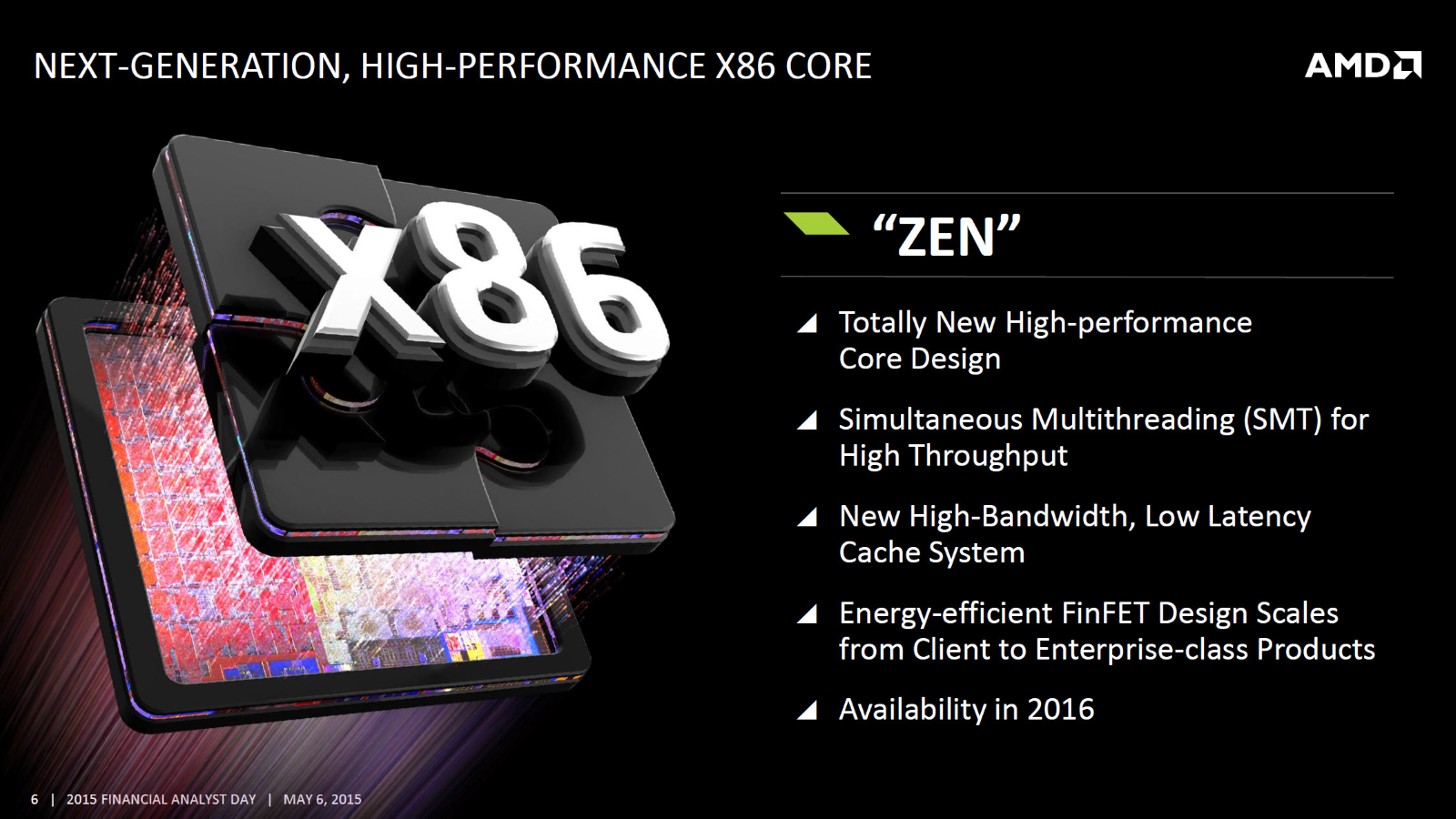
AMD’s next-generation CPUs likely won’t arrive until sometime next year (CES in January seems like as good an unveiling venue as any). That leaves plenty of time for speculation and rumor which is exactly what’s on offer today.
Sources reportedly familiar with the matter tell Fudzilla that AMD’s top-end server chip, codenamed Naples, will sport a 32-core / 64-thread configuration with a mind-numbing amount of cache on tap. It’ll be built on a 14-nanometer FinFET manufacturing process by GlobalFoundries with support for the x86 instruction set.
The publication says each Zen core will have its own dedicated 512kb cache and that each “cluster” will have 8MB of L3 cache, bringing the total amount of L3 shared cache to 64MB. There’s also said to be eight independent memory channels and 128 PCIe gen 3 lanes with support for up to 32 SATA or NVMe drives.
Naples will also reportedly support 16x10GbE via an integrated controller that’ll likely be in the chipset.
Keep in mind that Naples is the high-end chip of the family. There will also reportedly be dual, quad and sixteen-core server versions with TDPs of between 35W and 180W.
AMD CEO Lisa Su previously told the publication that the desktop version will arrive first, followed by server, notebook and embedded solutions. Fudzilla says the server chips will be spread out over a staggered release that could begin as early as late 2016.
https://www.techspot.com/news/65237-amd-top-end-zen-server-chip-reportedly-pack.html